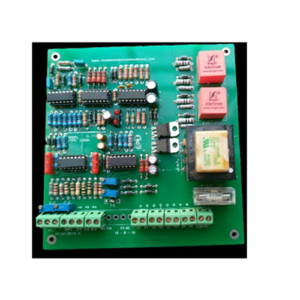Introduction
In the world of electrical engineering, transformers play a vital role in power distribution and conversion. Among the various types of transformers, the single-phase transformer stands as a fundamental component that finds extensive use in a wide range of applications. In this comprehensive article, we will delve into the details of the single-phase transformer, explaining its principles, functions, and applications. So, buckle up as we explore the fascinating world of this essential electrical device.
What is a Single Phase Transformer?
A single-phase transformer is a type of electrical transformer that operates with a single alternating current (AC) input and delivers a single AC output. It consists of two or more windings, often referred to as primary and secondary windings, which are inductively coupled and isolated from each other. The primary winding receives electrical power from the input source, while the secondary winding delivers the transformed output.
Working Principle
The fundamental principle behind the operation of a single-phase transformer is Faraday’s law of electromagnetic induction. When an alternating current flows through the primary winding, it creates an alternating magnetic field around it. This varying magnetic field induces a voltage in the secondary winding, resulting in a transformed output with different voltage and current levels.
Construction and Components
Single-phase transformers come in various sizes and configurations, depending on their intended applications. The key components of a single-phase transformer include:
1. Core:
The core is the central part of the transformer responsible for providing a low-reluctance path for the magnetic flux. It is usually made of high-permeability materials such as laminated steel or ferrite to reduce energy losses due to hysteresis and eddy currents.
2. Windings:
The primary and secondary windings are tightly wound coils of insulated wire that encircle the core. The number of turns in each winding determines the turns ratio, which defines the voltage transformation ratio between the input and output.
3. Insulation:
As the windings carry high currents, insulation is essential to prevent electrical breakdowns and ensure the safety and longevity of the transformer.
4. Tap Changer:
Some single-phase transformers feature a tap changer, which allows the adjustment of the turns ratio to regulate the output voltage within a certain range.
Advantages of Single Phase Transformers
Single-phase transformers offer several advantages that make them indispensable in numerous electrical applications:
i. Versatility:
Due to their compact size and simplicity, single-phase transformers are highly versatile and find use in a broad range of voltage conversion and distribution scenarios.
ii. Easy Installation:
Their lightweight and manageable size make single-phase transformers easy to install, particularly in residential and small-scale commercial settings.
iii. Cost-Effective:
Compared to three-phase transformers, single-phase transformers are more cost-effective, making them an economical choice for various low to medium power applications.
iv. Reliable Performance:
Single-phase transformers have a robust design, providing reliable and stable performance over extended periods.
Applications of Single Phase Transformers
The versatility of single-phase transformers allows them to be employed in various applications:
1. Residential Power Distribution:
In residential settings, single-phase transformers step down high-voltage power from the utility grid to the lower voltage levels required for household appliances.
- Commercial Buildings:
Single-phase transformers are widely used in commercial buildings to power lighting fixtures, HVAC systems, and other electrical devices.
- Industrial Machinery:
Small-scale industrial machinery often relies on single-phase transformers for voltage conversion and power supply.
- Renewable Energy Systems:
Single-phase transformers play a crucial role in renewable energy systems, facilitating the integration of solar and wind power into the electrical grid.
- Control Circuits:
In electronic devices and control circuits, single-phase transformers help provide isolation and voltage regulation.


